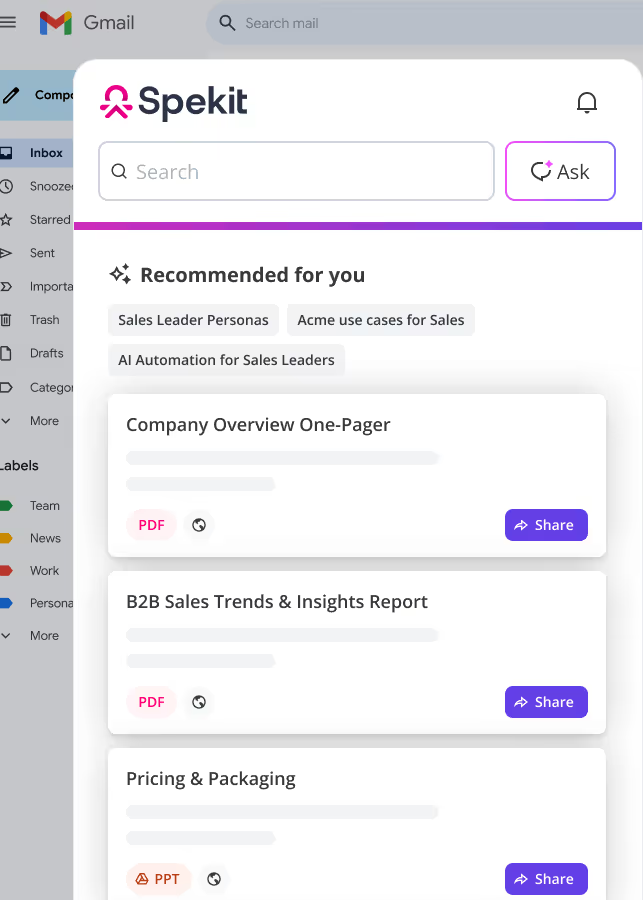Intro: What is BANT?
BANT stands for Budget, Authority, Need, and Timing. Each element represents a key aspect of the qualification process.
BANT is an acronym commonly used in sales to qualify and assess the viability of a potential sales opportunity.
It is a framework that helps sales teams determine whether a prospect is a good fit for their product or service and whether it is worth investing time and resources into pursuing the opportunity further.
Why are we using BANT?
- The BANT framework helps sales teams prioritize their efforts and allocate resources effectively by focusing on opportunities that have a higher likelihood of closing successfully.
- If a prospect meets the BANT criteria, it indicates that the opportunity has a strong foundation and is worth pursuing further.
- However, it's important to note that BANT is just one of many qualification frameworks, and different organizations may use variations or combine BANT with other criteria to assess potential opportunities.
How to use BANT in Initial Qualification
A sales team can use the BANT framework (Budget, Authority, Need, and Timing) as a systematic approach to qualify and assess potential sales opportunities.
BANT helps sales professionals determine whether a prospect is a good fit for their product or service and whether the opportunity is worth pursuing further.
How a sales team can effectively use BANT in initial qualification:
BANT Discovery Questions
Use these questions to uncover an opportunity and ask 'Why' or 'Tell me more' to dig further in their responses.
Click into Specific Persona Questions here:
➡ #Persona card 1
➡ #Persona card 2
BANT Email Flow
Between the cold call answer & the "meeting booked" call you schedule with the prospect, try to secure BANT via email.
Based on your 1st interaction, see below flow chart of how to integrate BANT into your email follow-ups.
🐙 BANT EMAIL same day
🐙 BANT EMAIL pre-meeting
Meeting Reminder | BANT Email Template
Challenge: Buyers come unprepared. Can change the agenda and we are not prepared = wasted meeting.
Goals: What BANT criteria do you have left to uncover? How responsive have they been (watching videos, answering via email, webinar signups?, etc).
Based on their level of activeness, craft your pre-condition email to set yourself up.
- Sent 24+ hours before meeting
- Confirms Date/Time/Attendance of meeting
- Offers a teaser or small valuable insight (include a resource for them to pre-read or watch)
- Sets/Reframes expectations
- Builds confidence in partnering with you
HI <INSERT NAME>,
Looking forward to our conversation on <DATE AND TIME>. When you have a chance, here are a few questions I'll cover or you can send back prior to ensure we're aligned on our call. [Insert BANT Questions that you still need to capture]
- Learn more about some of your challenges & top priorities:
- What is driving the need for a ‘XXX’ solution? (specific project rollout, poor tool adoption, etc)
- Is there a specific timeline you are looking to implement a solution to this need or are you in the exploratory phase?
- Do you have a specific budget amount set aside to fund this project, or would that need to be requested based on vendor's solution?
- Overview of 'Just in time Learning'
- Next Steps in your evaluation
Here is a great resource for you to review ahead of our call: <INSERT RESOURCE>.
Look forward to connecting.
Meeting Booked | BANT Email Template
Challenge: Keeping the momentum of interest from the prospect + YOU WANT a BANT or NO BANT quickly.
Goals: As soon as you make a connection [cold call, email response, LinkedIn] you are starting or continuing BANT.
- Sent SAME DAY you set the meeting
- Confirms Date/Time/Attendance of meeting
- Offers a teaser or small valuable insight (include a resource for them to pre-read or watch)
- Sets/Reframes expectations
HI <INSERT NAME>, Looking forward to our conversation on <DATE AND TIME>. I wanted to share this agenda and a few questions for you to answer prior to ensure we're aligned with the proper context for our call. Agenda:
- Learn more about some of your challenges & priorities over the next 3-6 months:
- What is driving the need for a ‘XXX’ solution? (specific project rollout, poor tool adoption, etc)
- Is there a specific timeline you are looking to implement a solution to this need or are you in the exploratory phase?
- Do you have a specific budget amount set aside to fund this project, or would that need to be requested based on vendor's solution?
- Quick Overview of ‘Just in time Learning’ & Spekit
- Next Steps in your evaluation
Please let me know if you want to add anything or anything specific you would like to cover. In the meantime, [Here is a great video resource] for you to review ahead of our call to give you context as to what Spekit solves for.
If you feel anyone [Authority] else should be invited to this call, feel free to add them! I look forward to connecting.
[Signature]
Objection Handling | Budget
How can we overcome 'Budget Objections':
🎥 Navigating budget conversations (4 mins)
🗣️What will you hear from a prospect or customer?
- We don't have budget for a new tool.
- We don't have a line item for this, so we'd need to pull budget from elsewhere.
- This isn't something we are looking to purchase right now.
- We are on a budget freeze.
- We only budgeted $5k (or some other low amount) for this.
- We are just in the exploratory phase.
- We aren't comfortable sharing our budget.
💲We need to teach our buyers how to buy...
Use this framework to craft an objection response:
Acknowledge: Show empathy & understanding of the objection
Respond: Re-confirm the problem, intent to solve and timeline (this means you should start by outlining their pains/need)
Pivot: Ask open-ended questions
📞 Example Talk Tracks:
Additional Resources:

